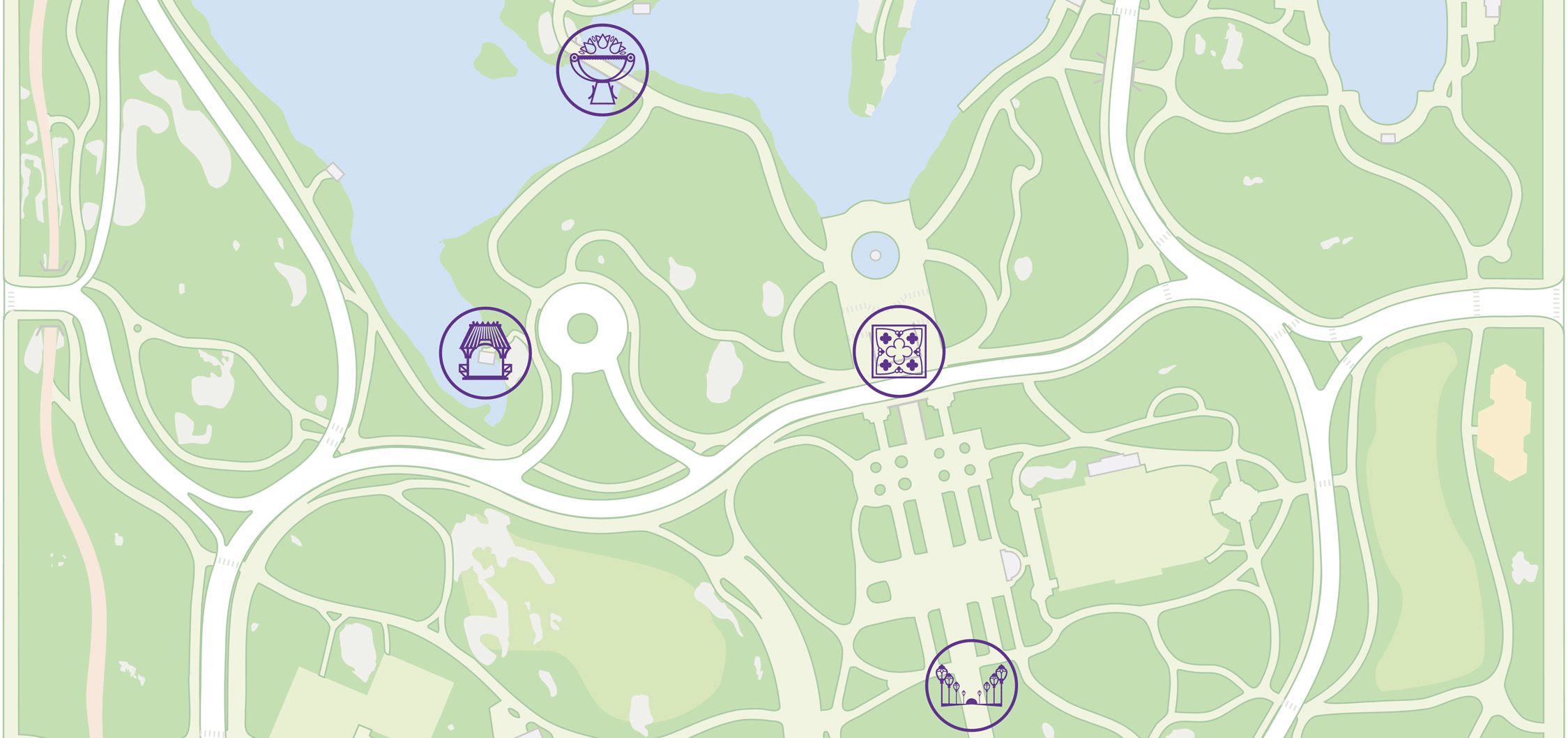Celebrate Spring Tour

Welcome to the Celebrate Spring tour in honor of Frederick Law Olmsted’s 200th birthday!
Thank you for generously supporting the Central Park Conservancy, and welcome to the Celebrate Spring tour in honor of Frederick Law Olmsted’s 200th birthday! Olmsted, along with Calvert Vaux, designed Central Park and conceived of the landscape as a series of sweeping meadows, tranquil water bodies, and picturesque woodlands that all New Yorkers could afford to visit—regardless of their means. Along your walk today you will learn about key features in the area that Olmsted and Vaux considered the “heart” of the Park.
Tour Map

The Mall

Winding paths are found throughout the naturalistic design of the Park. The one notable exception is the Mall, which Olmsted and Vaux laid out along the most direct line between the southeast corner of the Park—which welcomed the largest number of visitors—to Bethesda Terrace overlooking the Lake and Ramble. They described the quarter-mile long promenade lined by a double row of elms as an open-air hall of reception, occupying the same position of importance in the Park as a mansion would on a private estate.
The southern half of the Mall would come to be known as Literary Walk, a reference to the collection of monuments to authors, poets, and playwrights sited there in the 19th century. These statues were not part of the original design, and all monuments are located in two places where they would not detract from the naturalistic landscape: on the Park perimeter in proximity to the entrances and along the formal promenade of the Mall.

Bethesda Terrace

Bethesda Terrace was designed in the 1860s as the Park’s only formal architectural feature. Its grand staircases and the Arcade passage underneath the Drive connect the Mall to a plaza that offers picturesque views of the Lake and Ramble. Vaux designed the Terrace as the architectural centerpiece of the Park, and its elaborate decorative elements are the work of his assistant architect, Jacob Wrey Mould. Intricate carvings in the sandstone walls, balustrades, and piers throughout the Terrace depict elements of nature—flora and fauna—through the four seasons.

Bow Bridge & The Island

With its subtle arc and cast-iron ornamentation, Bow Bridge was designed to harmonize with its surroundings and transition between the formality of Bethesda Terrace and the natural, picturesque character of the Ramble. The original eight decorative urns were removed circa 1920. As part of a 2008 restoration of the Bridge by the Conservancy, they were recreated from molds of the lone surviving urn.
Offshore, in the nearby water just west of Bow Bridge, is the Island, which Olmsted designed as a focal point for views of the Lake and to lure those sitting or strolling along its southern shore across the Bridge into the Ramble. By the early 2000s, the Island had eroded below the surface of the Lake. The Conservancy restored the Island in 2007 as part of a larger restoration of the Lake and the Ramble shoreline.

Wagner Cove Boat Landing

The Lake’s irregular shape and undulating shoreline were designed to create the impression that it continued indefinitely. Coves and inlets contributed to that effect, heightening the visual interest and sense of mystery experienced by visitors taking in views of the water body, and enticing those in rowboats to explore. Six unique boat landings constructed along the shoreline of the Lake served as stopping points for boats and provided a sheltered spot from which to sit and take in the scenery. In 2015, the Conservancy reconstructed five of the original boat landings according to the historic designs.
